A Photo Reportage by Karl-Markus Gauß and Kurt Kaindl
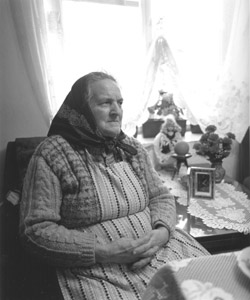
Slovakia
In Bratislava and a few other Slovakian cities, life has long resembled that of Western European cities with their fashions and fast, everyday tempo of life. But the majority of Slovaks live in small villages, and there in the countryside, old traditions and customs are still cultivated to this day. Such is predominately the case in the German village of Hopgart where this farm woman poses proudly and confidently before the camera.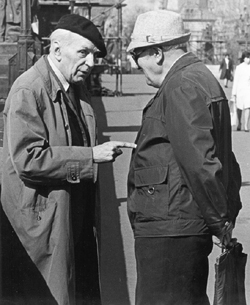
The Czech Republic
Sometimes clichés come very close to reality. For example, the Czech being a congenial and cunning debater whose favorite pastime is to explain the world to his friends with ambiguous wit is a cliché, but a thousand times over a reality. This street scene from the Bohemian city of Budweis shows two older Czechs demonstrating the truth of the cliché.
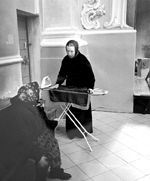
Lithuania
Vilnius, the bustling metropolis of Lithuania, where life beats in a different rhythm, is endowed with more than fifty churches. This orthodox church in the middle of the city is surrounded by banks and commercial buildings of multinational fashion industries. Here are two women, a nun ironing and a tired believer making last preparations for getting their house of prayer in order for the Easter celebrations.
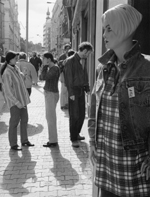
Poland
Everywhere in the eastern part of Europe, particularly in Poland, the visitor from the West comes across a setting which appears familiar to him and at the same time foreign. He is fascinated by the amalgam of the most modern and the most traditional, the hybrid of two eras, two worlds in one and the same place, possessing a charm of its own. As much as this simultaneity is a cultural opportunity, it also harbors the seed of social crises.
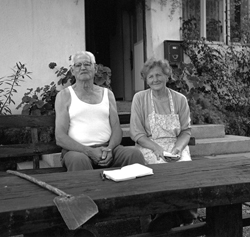
Slovenia
In the south of Slovenia on the border to Croatia lies the immense Hornwald, a thick forest rising from a karstic soil once cleared and cultivated by a small German minority, the Gottscheer. Thousands upon thousands of Gottscheern immigrated during the 19th century to America, where to this day they keep the memories of their ancestors' country alive. At the edge of this forest lies the village Stari Log. The Slovenian owners of a small cottage were immediately prepared to pose for the camera in the midst of their life’s work with its garden embellished with decorative wooden figures so that the big world outside could witness the beauty of their small world.
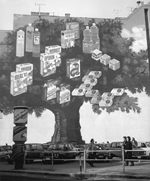
Hungary
Modernization immediately grasped Eastern Europe after the political turn of the 1990s, and it took but a few short years to catch up whereby in other parts of the world it needed decades. Therefore, fashion quickly became out-of-date after having been the last rage during the previous season, and it is now covered with something like a patina of the Modernist Era. This tree filled with advertisement was erected in Budapest a few years ago as a bold installation after the model of capitalism. It appears today like a threadbare museum piece of the Modernist Era in a public area whose charm lies exactly in its being worn-out.
